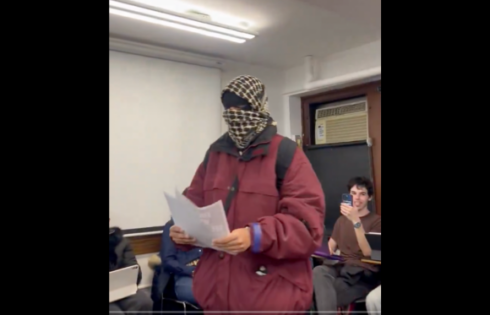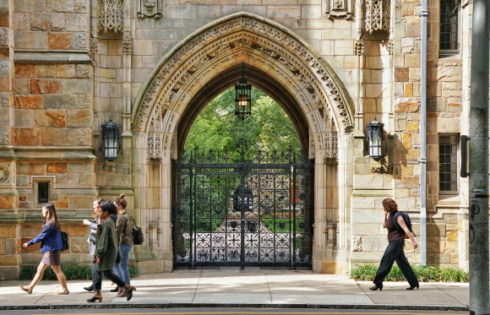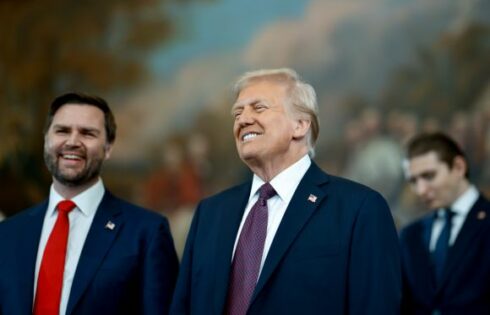
An enormous shift in the past eight years
Public and private universities used to overwhelmingly restrict free speech in their written policies.
Now most of them have embraced speech policies that can encourage “administrator abuse and arbitrary application” owing to their ambiguity – so-called yellow-light schools, according to the Foundation for Individual Rights in Education’s annual Spotlight on Speech Codes report.
The report found some positive increases in protections for free speech on college campuses, particularly the decline of schools with a “red light” rating, meaning they have “at least one policy that both clearly and substantially restricts freedom of speech.”
This is not good enough for the education civil-rights group, which said it would “work in the coming years to make the number of yellow light institutions decline dramatically as well.”
The University of North Carolina-Greensboro and the State University of New York-Plattsburgh had the distinction of being the only schools to jump from a red-light to a green-light rating in a single annual report.
Meanwhile, South Dakota’s Black Hills State University had the dubious distinction of going from the best to worst rating. The report didn’t explain how these schools made leaps between red and green.
West is the worst
FIRE surveyed the public speech policies for 357 four-year public institutions along with 104 of the “nation’s largest and/or most prestigious private institutions,” the report says.
Of those 461 institutions, the group rated just under a third as “red light,” its worst rating. That’s a 7 percent drop from its 2017 report and a whopping 42 percent decline from when FIRE published its first annual Spotlight report in 2009.
Nearly three in five institutions received a “yellow light” rating, indicating they have policies that “restrict a more limited amount of protected expression or, by virtue of their vague wording, could too easily be used to restrict protected expression.”
MORE: UC-Berkeley working with FIRE to improve ‘unjustified’ rating
But the best news, according to FIRE, is the record number of institutions with its highest rating of “green light”: Thirty-seven have policies that “do not seriously imperil speech.”
The vast majority of these institutions are from the east coast and midwestern U.S. The lone west coast school to receive the green-light rating is Oregon State University.
North Carolina is the most represented state, with eight institutions receiving a green-light rating. Noticeably absent from this list are Ivy League schools, which all received yellow or red-light ratings.
More than half of private schools patrol for ‘bias’
Though public institutions are subject to different obligations than private institutions, FIRE acknowledged, many of the latter “explicitly promise” freedom of speech and expression, while simultaneously stifling it.
It also pointed to the 27 schools that have now adopted “statements in support of free speech modeled after the one adopted by the University of Chicago in January 2015” – 11 of them private, including Amherst College, Columbia University and Vanderbilt.
“Given that these institutions are choosing to strengthen their commitments to free speech at a time when student calls for censorship seem louder than ever, we hope this trend signals a growing understanding, among private school administrators, of the need to protect free speech in higher education quite apart from constitutional questions,” the report says.
MORE: North Carolina is the best state for campus free speech
Yet even as more speech codes are removed, “free speech on campus remains under serious threat,” the group warned: “Student, faculty, and administrative demands for censorship of controversial or offensive speech are common, and an unacceptable number of universities continue to punish students and faculty for constitutionally protected speech and expression.”
It’s strongly critical of policies that aim to end “bias and hate speech” because they usually “include speech codes prohibiting extensive amounts of protected expression” and infringe on due process rights.
Of the schools surveyed, 140 had bias response teams, FIRE said. While public schools had the largest total number of such teams, only about one in four public schools had a team. More than half of private schools – 53 – had such teams.
On the issue of “free speech zones” that limit where and how students can express themselves – 52 schools have such policies – the percentages were flipped.
Only 4 percent of private schools have these zones, compared to 11 percent of public schools, even though such zones are “inconsistent with the First Amendment,” FIRE said.
MORE: ‘Bracket of Shame’ highlights most censorious NCAA schools
IMAGE: Thiti Sukapan/Shutterstock
Like The College Fix on Facebook / Follow us on Twitter






Please join the conversation about our stories on Facebook, Twitter, Instagram, Reddit, MeWe, Rumble, Gab, Minds and Gettr.